A Big Boost for the Elephants’ Home Thanks to the National Lotteries Commission

Thanks to an incredible grant given to HERD by National Lotteries Commission (NLC) in South Africa for executing our Land Restoration Project in the elephants’ wilderness, we have made tremendous progress in transforming the land around the HERD homestead and orphanage. This land is frequently used by the elephants, whether for feeding or passing through en route to other parts of the reserve. It, therefore, suffers the most at the hands, or trunks, of the elephants and needs more care in regenerating to better survive and thrive for years to come. This land supports our herd and other wildlife in our reserve.
The NLC relies on funds from the proceeds of the National Lottery. The Lotteries Act guides the way in which NLC funding may be allocated. The intention of NLC funding is to make a difference to the lives of all South Africans, especially those more vulnerable and to improve the sustainability of the beneficiary organisations. Available funds are distributed to registered and qualifying non-profit organisations in the fields of charities; arts, culture and national heritage; and sport and recreation. By placing its emphasis on areas of greatest need and potential, the NLC contributes to South Africa’s development.
HERD Trust is grateful to be supported by the National Lotteries Commission as we endeavour to care for the elephants’ home. Below is an update from our Sustainability Projects Manager, Juan Ferreira, regarding the work he and the team have been busy carrying out for our Land Project, mainly from June to September 2024.
We are happy to present this NLC Grant Execution Update, which provides a brief summary of the work conducted with the grant funds commissioned.
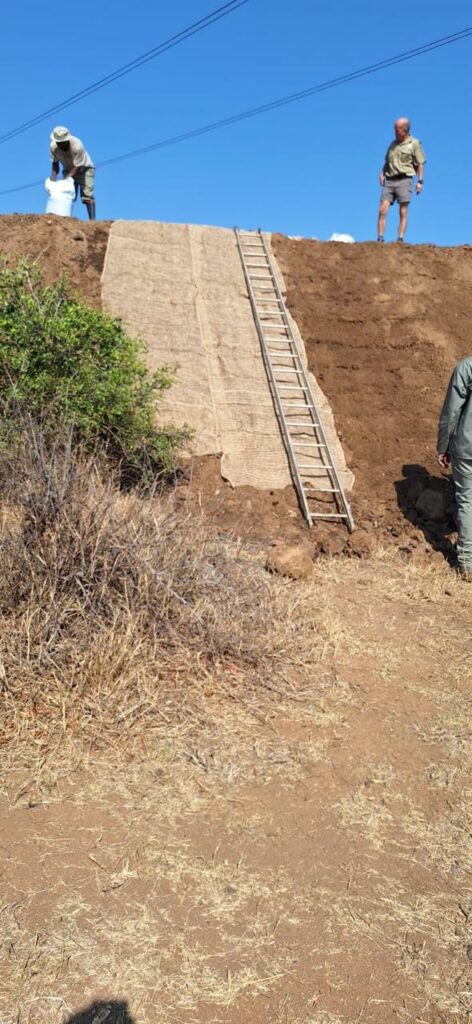
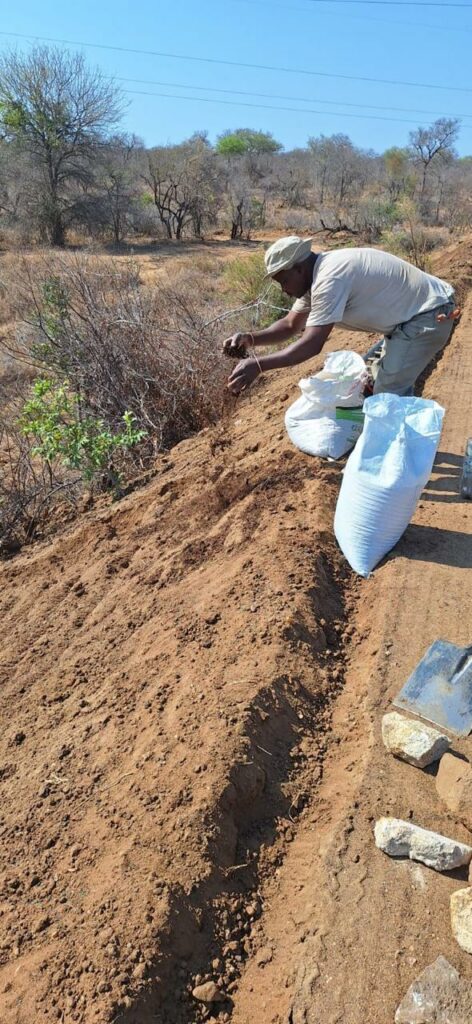

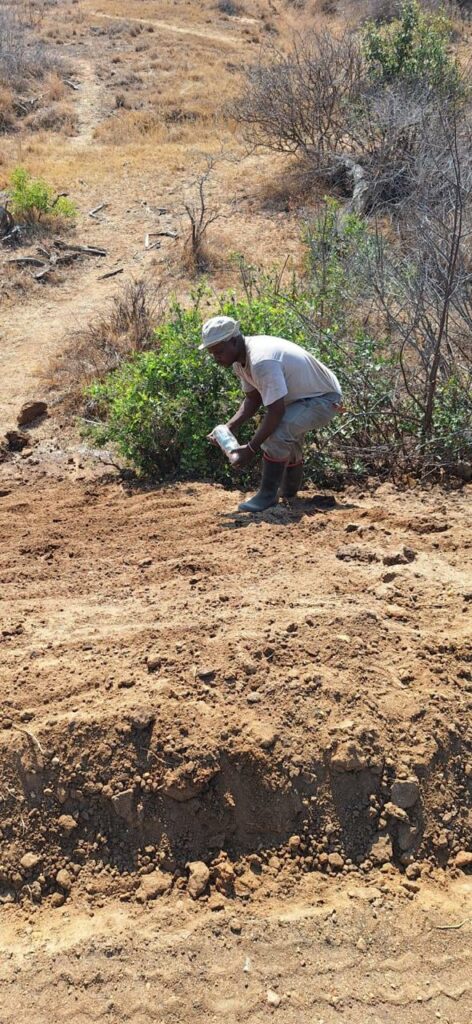
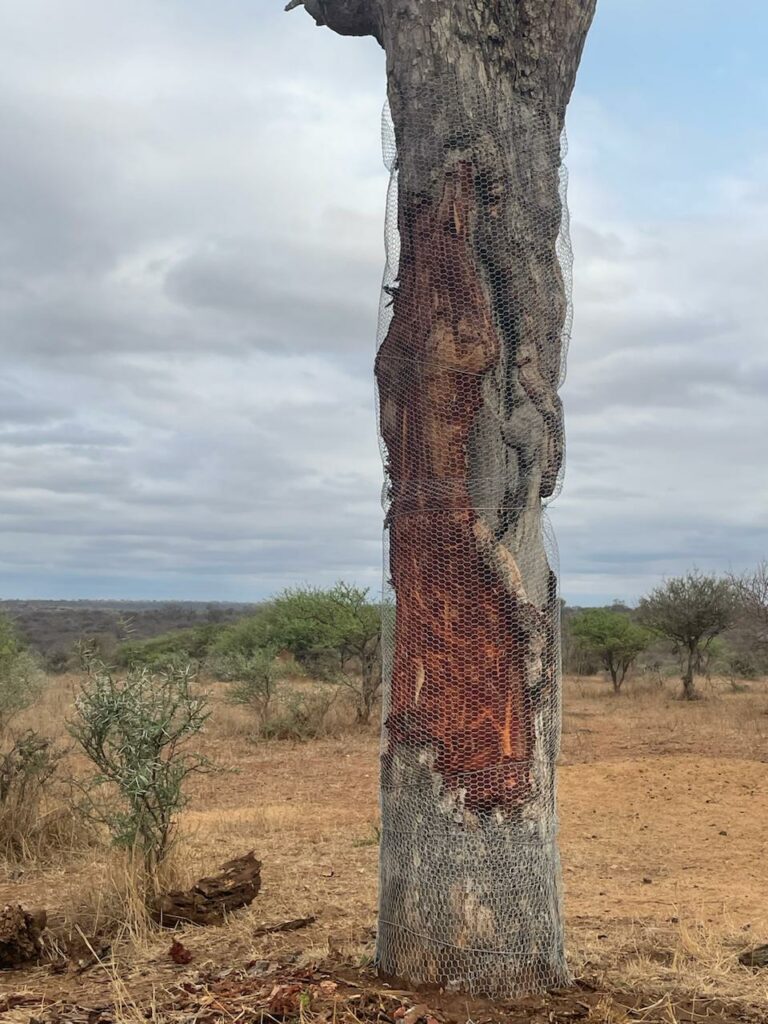
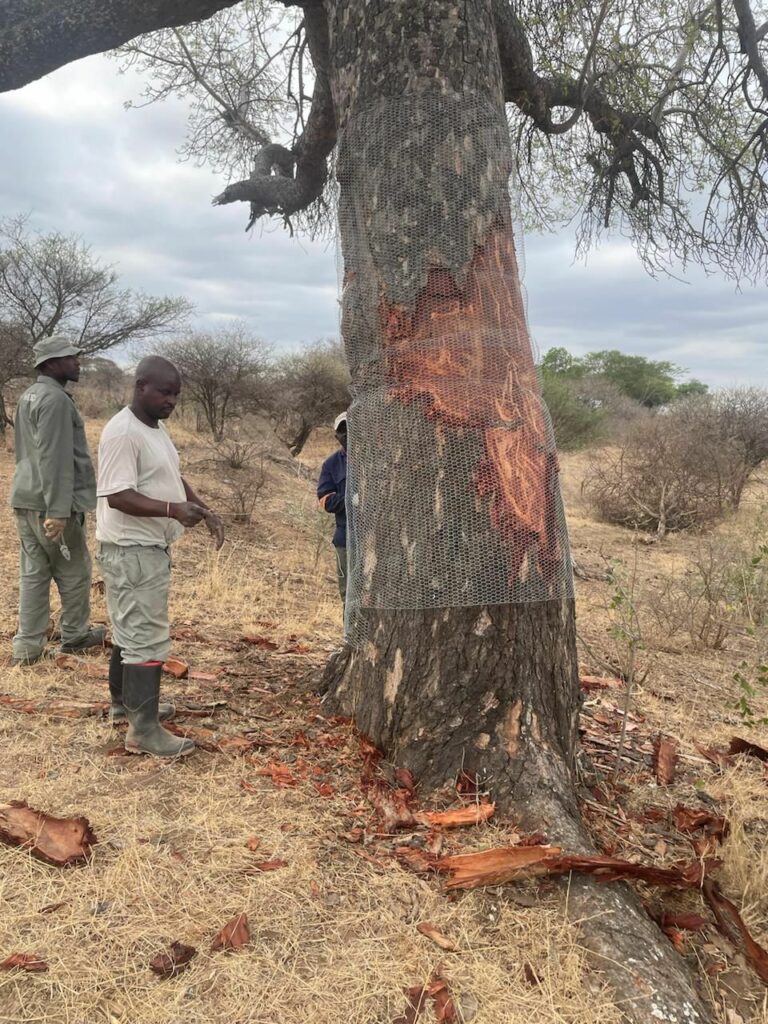
Road Infrastructure
Using the tractor and trailed grader purchased as a capital expense, 10,4km of primary access road (in June) plus 5,7km of arterial farm roads (in July) were maintained. As a part of this maintenance, guidance humps were bolstered, and spillways opened to facilitate the controlled flow of water to prevent soil erosion to the surrounding topsoil and natural vegetation.
The washboard effect created by high traffic was significantly reduced to a smooth road surface, easing access to the property and preventing unnecessary undercarriage damage to vehicles. The road’s surface was maintained to improve ride comfort for guests and prevent unnecessary strain on vehicle components. Roadside branches have also been cut to avoid damage to safari vehicles’ canvas roofs and paintwork.
During August, a new tractor driver was appointed and trained to use all the associated tractor-drawn equipment. In preparation for the rainy season, the tractor was used to open several spillways and reinforce several water guidance humps on key game drive routes.
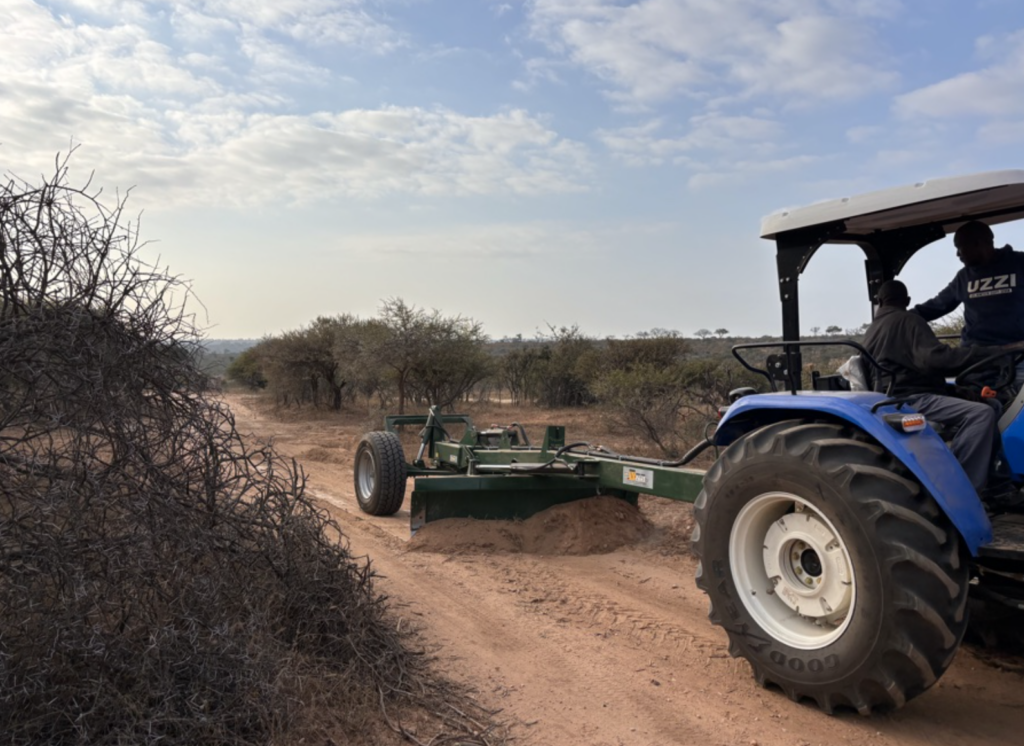
Road surface being graded.

Spillway being opened.
Water Provision
Using the tractor and trailed grader alongside heavy earth-moving equipment, a dam wall severely damaged by past floods was restored to hold water. This dam will serve as a critical waterhole for wild animals on the reserve, especially during the dry season when little water is available in the veld.
A critical part of any dam wall is the overflow infrastructure. During August, the dam’s overflow was constructed, consisting of a low-water bridge and two overflow gabions. This allows excess water to flow out of the dam in a controlled manner in the event of a high-precipitation rainy season without damaging the dam wall.

Construction of overflow low bridge and Gabion mattress.
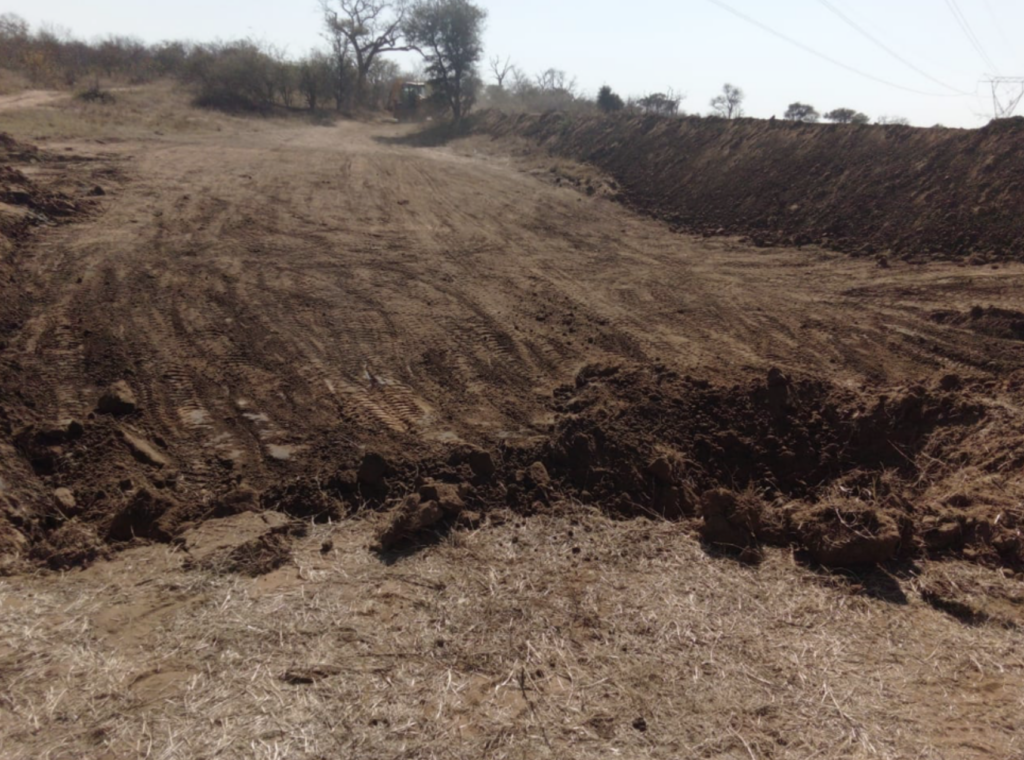
The reconstructed dam wall is visible to the right of the picture.
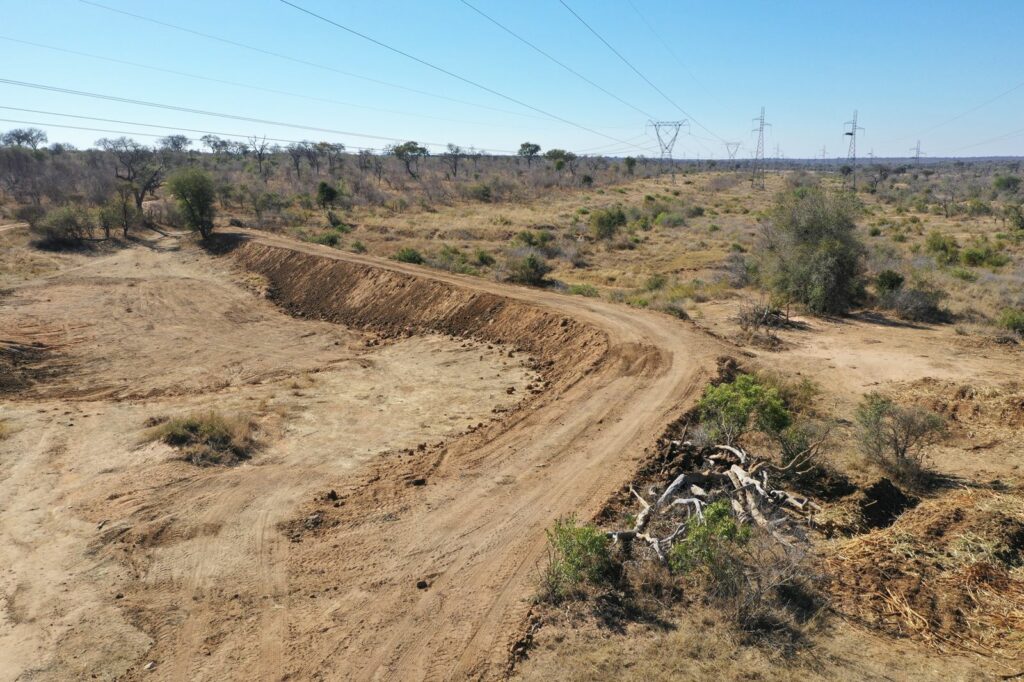
Restored dam wall areal view
Veld Management & Erosion Control
Two portions of the severely degraded veld, approximately 250m x 250m in size in June and 750m x 550m in July, were partially restored by constructing 85 “hollows”. With this technique, a C-shaped furrow is dug using the tractor and trailed grader alongside earth-moving equipment. These hollows are plotted out to form a scale-like pattern when viewed from above. The intended outcome of this technique is to slow down the speed of run-off water during the rainy season and retain that water within the restored area. This retained water will be re-absorbed into the soil instead of being lost as surface run-off. Increased soil moisture levels alongside organic debris and grass seeds create a favourable environment for seed germination and ground coverage. In the future, this ground coverage will slow surface run-off and water retention, allowing for a habitat that now accommodates animal species of all trophic levels.

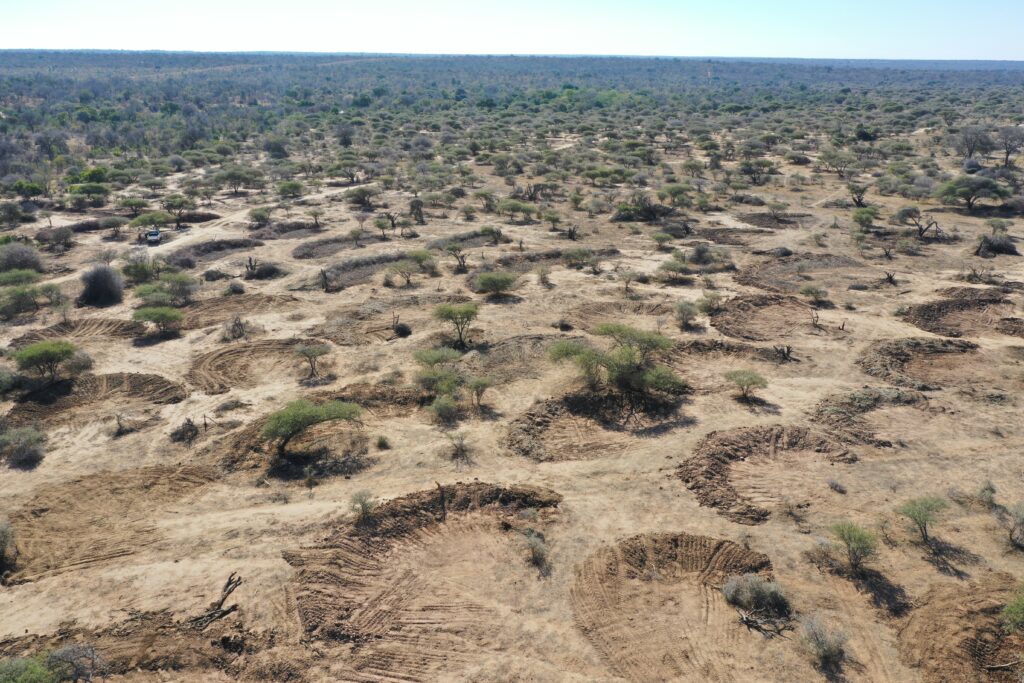
After the hollows were made, they were densely covered with thorn tree branches harvested from surrounding trees, using a brush-packing technique. This protects the exposed soil from trampling and excess sunlight, promoting favourable seed germination conditions. The two battery-powered chainsaws speed up the brush-packing process significantly. Their lightweight construction and simple engineering make them easy to use for extended periods while reducing downtime associated with conventional fossil fuel-powered chainsaws.
By August, all the intended hollows had been made, and the process of brush-packing in these hallows started. Six ladies were employed and taught how to do brush-packing correctly and use the hand tools necessary to complete the task. At the end of August, 41 hollows were completely brush-packed.
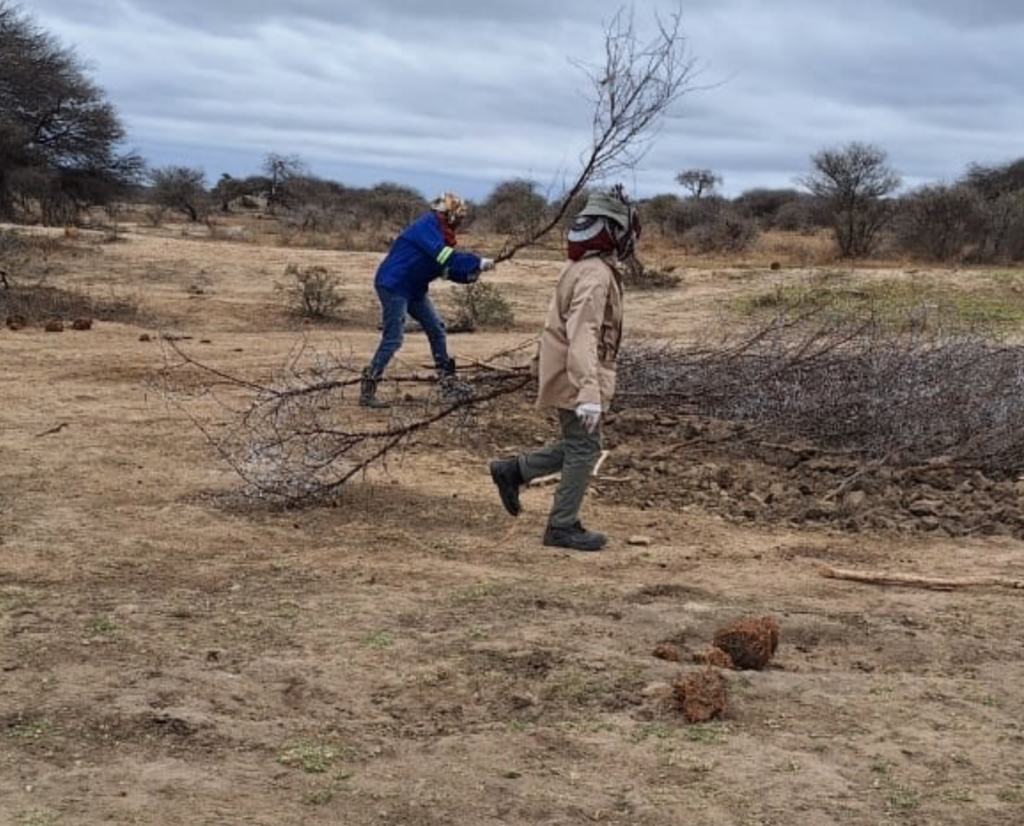
Ladies brush-packing the hollows.
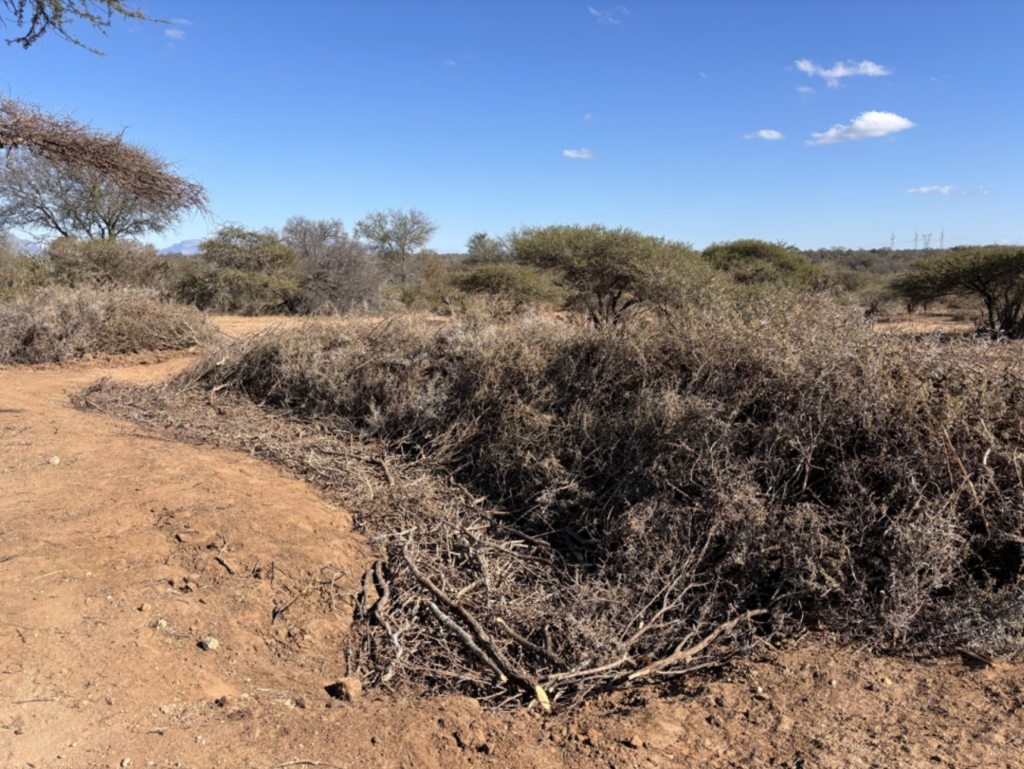
Brush-packing inside and on top of the hollow.
Towards the end of September, elephant dung compost and grass seeds were sowed inside the hollows to accelerate rehabilitation.
Bana Grass & Elephant Dung Compost
Bana grass is a crop that is similar to sugar cane and is grown on a plantation in our reserve to provide additional dry-season feed for the Jabulani elephant herd. During the dry season, fresh forage becomes scarce, and the bana grass provides much-needed nutrition. The original three-hectare plot was planted in 2018 and has been used ever since. The plants have reached a level of maturity where they now need to be replaced. In August, the first plot was cleared by an additional six ladies. In September, the land was composted and irrigated while fresh cuttings were prepared for the planting season.



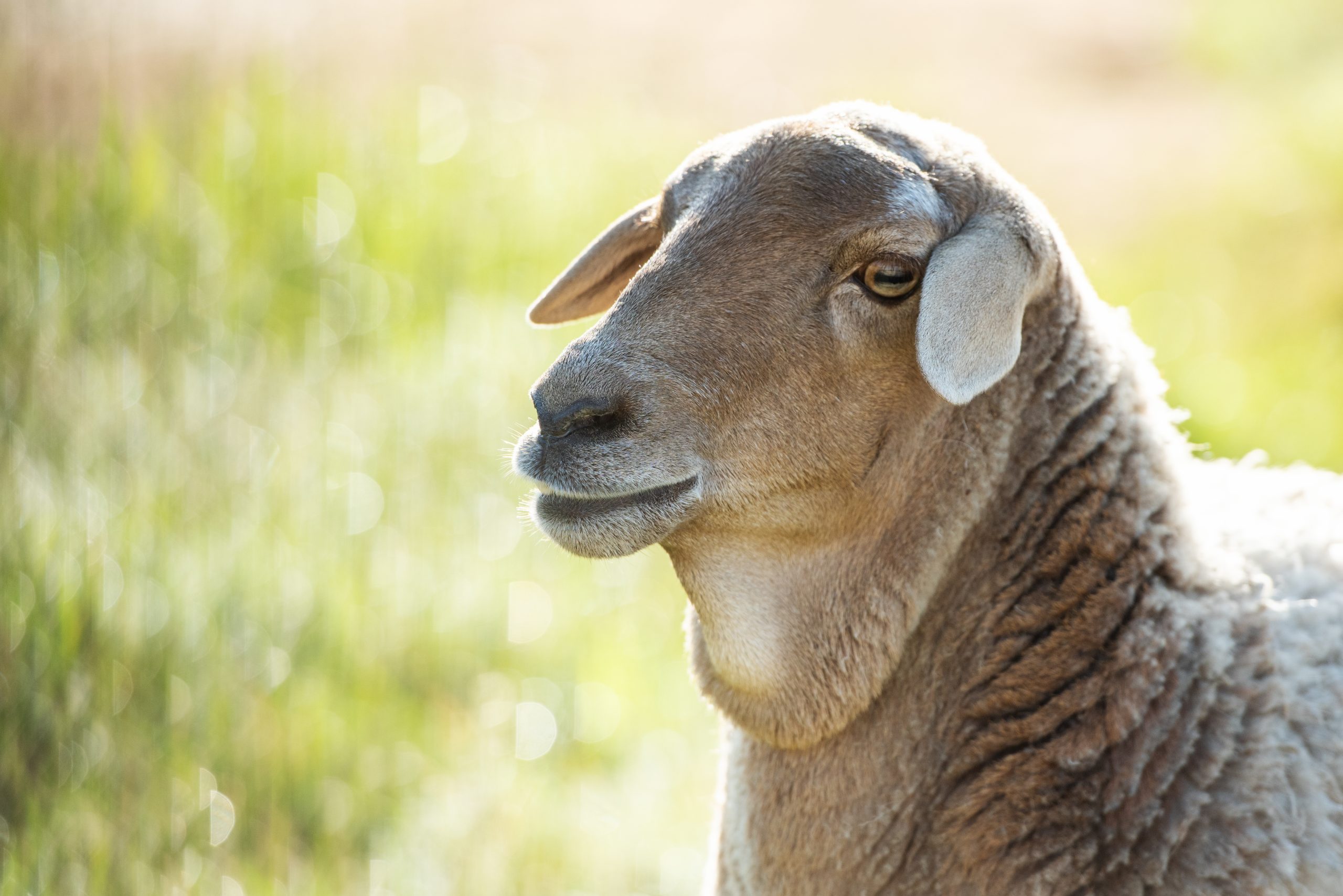
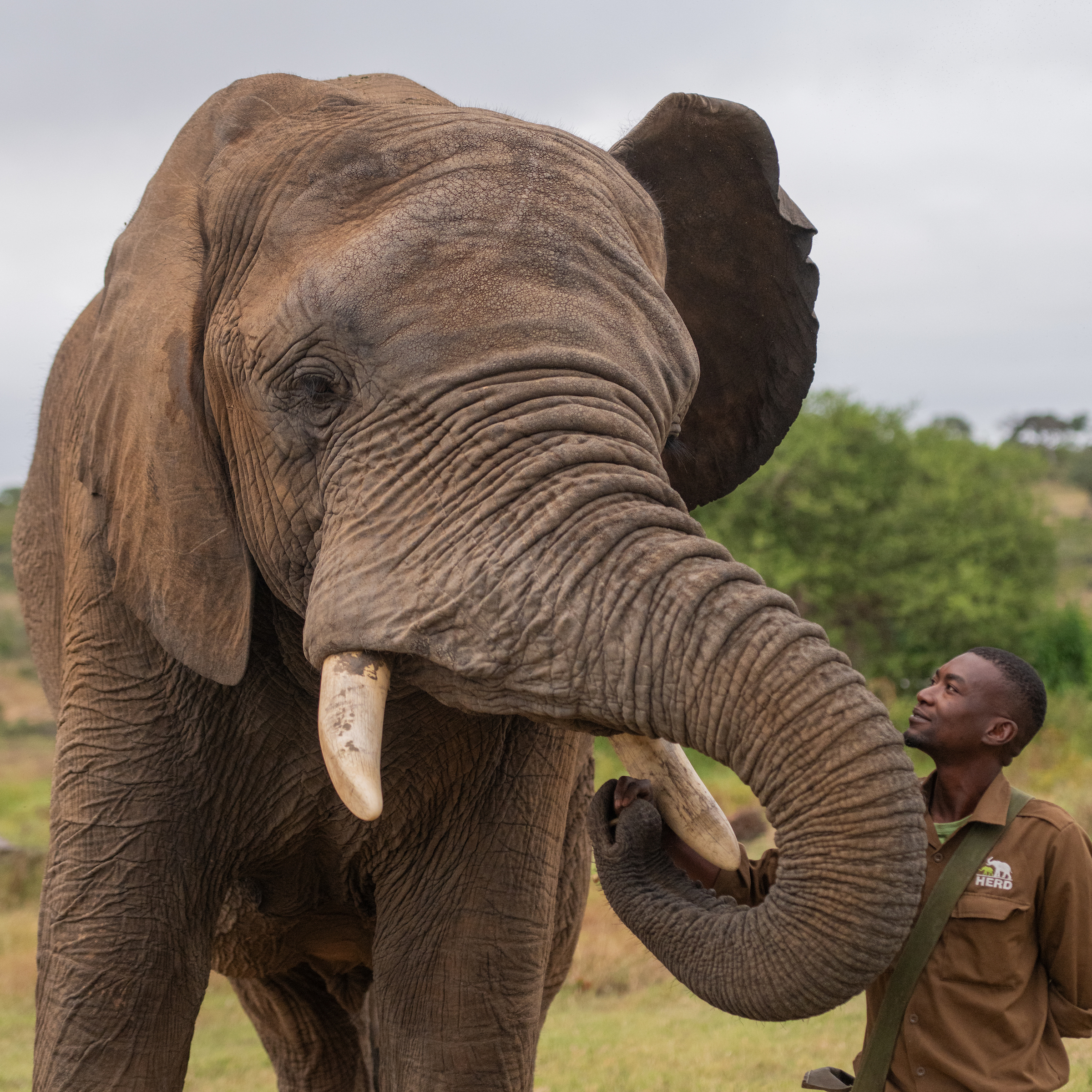

No comments yet.